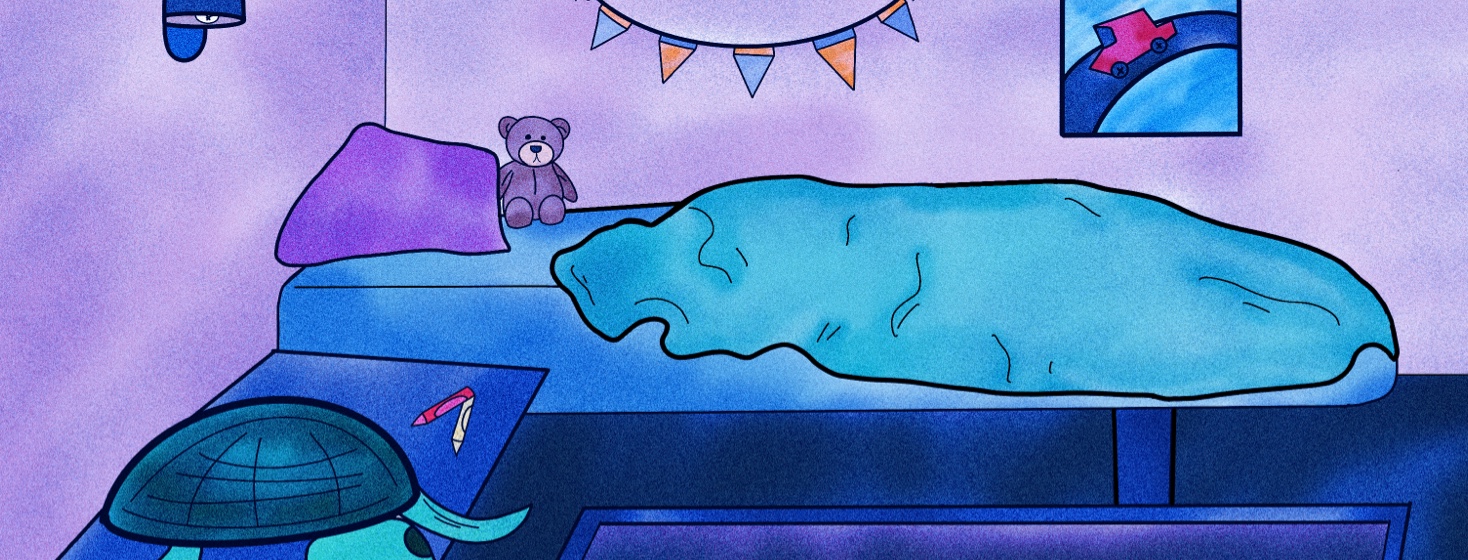Narcolepsy in Kids: Are They Born With It?
Reviewed by: HU Medical Review Board | Last reviewed: August 2024 | Last updated: August 2024
Narcolepsy often begins in childhood or adolescence. But it can look a lot different in kids than in adults. This can make it hard for doctors to diagnose children with narcolepsy.1,2
What are the types of narcolepsy?
There are 2 types of narcolepsy:2
- Type 1 narcolepsy involves excessive daytime sleepiness, cataplexy, and low levels of a brain hormone called hypocretin.
- Type 2 narcolepsy involves sudden daytime sleepiness. People with type 2 narcolepsy have normal levels of hypocretin.
Cataplexy is a sudden and involuntary loss of muscle tone while awake. Hypocretin helps support wakefulness and regulates sleep.2
About 7 in 10 adults with narcolepsy have type 1 narcolepsy (with cataplexy). But slightly more than half of kids (56.4 percent) who are diagnosed with narcolepsy have type 2 (without cataplexy).1,3
Are you born with it? Or is it acquired?
Most cases of narcolepsy are what doctors call sporadic. This means they appear in someone without a family history of the disorder.2
Researchers are still trying to understand what causes narcolepsy. The leading idea is that it develops from a combination of factors including:2
- Autoimmune disorders – The immune system may mistakenly attack brain cells that produce hypocretin.
- Family history – About 1 in 10 people with type 1 narcolepsy report that it runs in their family.
- Brain injuries – Rarely, narcolepsy can stem from trauma to parts of the brain that regulate wakefulness and sleep.
Kids 6 and younger are rarely diagnosed. As you get older, the chances of being diagnosed increase. For example, about 7 out of every 100,000 children 7 to 11 years old will be diagnosed with narcolepsy. But this number rises to 24 out of every 100,000 adolescents 12 to 17 years old. The onset of narcolepsy symptoms in kids peaks around age 15. The symptoms may not come on all of a sudden, and they may not all appear at the same time. It can take years. There may also be a significant delay between the onset of symptoms and reaching an official diagnosis.3,4
What are the symptoms of narcolepsy in children?
Parents may first notice that their child suddenly needs more sleep than is appropriate for that child's age. The child may seem to regress and need afternoon naps once more. Or they may have irresistible sleep attacks during times of inactivity.4
When a child with narcolepsy is sleepy, they may show signs of:1,4,5
- Irritability
- Aggressiveness
- Hyperactivity
- Poor attention
- Mood changes
- Sleep-related hallucinations
- Sleep paralysis
Misinterpreting the symptoms
Many of these symptoms are easy to miss or misinterpret in kids and adolescents. When a child struggles to pay attention, it is often seen as misbehavior. Children with narcolepsy may also do poorly in school. This tends to move parents' focus from health to academics.1
Adolescents – even ones without narcolepsy – often have disrupted sleep and daytime sleepiness. Because these symptoms are already common in this age group, they can be hard to interpret or diagnose.1
Kids or adolescents who experience sleep-related hallucinations may also be misdiagnosed with a nightmare disorder.4
Burden of symptoms
Parents, youth, and care providers were surveyed on the most common and problematic symptoms of childhood narcolepsy. They reported, in order of burden:5
- Daytime sleepiness
- Disturbed nighttime sleep
- Mood challenges
- Cataplexy
- Sleep-related hallucinations
- Sleep paralysis
Cataplexy
Fewer than half of kids with narcolepsy also have cataplexy. In about 1 out of every 10 people with narcolepsy, cataplexy is the first symptom. When a child experiences cataplexy first, they may be misdiagnosed with a seizure disorder.2
Young children with cataplexy may show facial expressions that are subtle or unusual for them. Some also have fluid, dance-like (choreic) movements that they cannot control.1
Other conditions with narcolepsy
It is not unusual for children with narcolepsy to also have other health changes or disorders. These may include:1
- Anxiety
- Attention-deficit/hyperactivity disorder (ADHD)
- Depression
- Early onset of puberty
- Higher risk of deficits in social function
- Rapid weight gain
Children with narcolepsy have a 1,000 times higher prevalence of early puberty compared to their peers.4
Treatment options and lifestyle changes
Treatment should be tailored to the symptoms of each person. Medicines approved to treat excessive daytime sleepiness in adolescents and children 17 years and younger include:4,6
- Dexedrine® (dextroamphetamine)
- Ritalin®, Concerta®, Metadate® (methylphenidate)
- Wakix® (pitolisant)
- Xyrem® (sodium oxybate)
Wakix is approved to treat excessive daytime sleepiness in children ages 6 and older with narcolepsy. It is also approved to treat excessive daytime sleepiness and cataplexy in adults with narcolepsy.6
Xyrem is also approved to treat cataplexy in those aged 7 and older.2,4
Lifestyle changes can also help manage this condition. Parents can help implement the following strategies:2
- Schedule short naps – Evaluate if your child has a pattern when they are sleepiest during the day. Try to schedule short naps then.
- Keep nighttime sleep on track – Put your child to bed and wake them at the same times every day.
- Avoid caffeinated drinks or food – Help your child refrain from sodas, chocolate, and other drinks or food that contain caffeine after mid-afternoon.
- Get active – Help your child to engage in age-appropriate exercise.
- Relax before bed – Turn off screens and engage in a relaxing activity with your child before bed. Great activities for winding down include:
- Yoga
- Meditation
- Reading
- A warm bath

Join the conversation